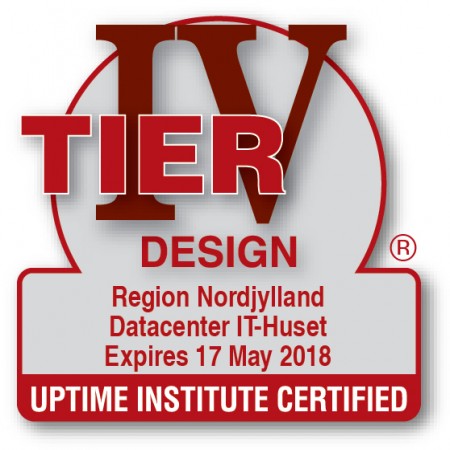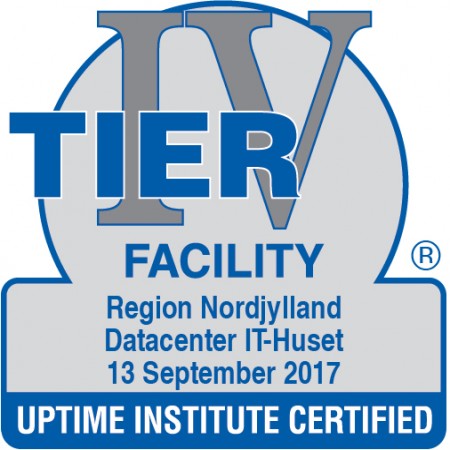Témoignage client : Hôpital régional Nordjylland, Système régional de santé
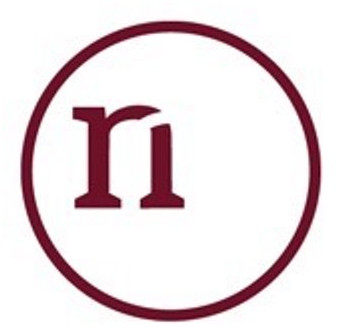
Klaus Larsen
CIO, Région Nordjylland
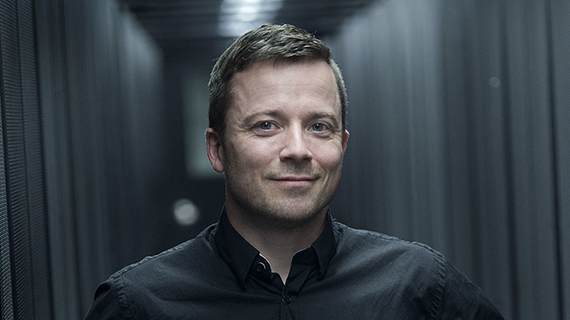
Crédit photo : Lars Horn, Baghuset
Le défi
La mise à niveau du datacenter existant a créé un risque qui pourrait potentiellement affecter la sécurité et le bien-être des près de 600 000 résidents de la région. Au Danemark, le gouvernement régional a trois responsabilités principales : les soins de santé, le développement régional et les services sociaux, et il ne repose que sur deux centres de données pour fournir le soutien informatique nécessaire. Les médecins, le personnel infirmier et les administrateurs qui travaillent à l’hôpital comptent sur l’informatique pour fournir un soutien clinique et administratif. Les citoyens de la région dépendent également de ces centres de données, non seulement pour le soutien clinique, mais également parce que la région Nordjylland est responsable de plusieurs systèmes nationaux, dont 911 appels d’ambulance (d’urgence). Au total, le centre de données régional Nordjylland Danemark abrite plus de 500 systèmes, dont 911 services d’ambulance, des dossiers de soins de santé des patients, des systèmes d’aide à la décision et d’autres systèmes critiques prenant en charge plus de 15 000 employés.
La solution
Un effort collaboratif pour répondre aux exigences de Tier IV
Afin d’atteindre ses objectifs de certification de Tier IV, la région Nordjylland a commencé par référencer et appliquer la norme de niveau d’Uptime Institute : Tier Standard Document sur les normes de topologie. Il s’agissait d’une base de référence permettant à l’équipe d’identifier et de comprendre les exigences pour obtenir la certification de Tier IV.
Deuxièmement, la région Nordjylland a tiré parti de l’expertise de son personnel existant. Les employés du service informatique régional de Nordjylland et du service technique de l’hôpital universitaire d’Aalborg ont collaboré à la planification, à la conception et au développement du centre de données, afin que le centre de données ait été entièrement conçu par les employés de la région Nordjylland, avec une expérience de l’exploitation et de la conception des installations hospitalières. Guidée par son expertise approfondie en opérations critiques, l’équipe a utilisé des solutions simples, mais efficaces, conçues pour l’opérabilité et la maintenabilité.
Steffen Jacobsen, directeur technique de l’hôpital, a été très impliqué dans le processus de conception et de construction. Jacobsen a passé de nombreuses années à concevoir des hôpitaux et a offert son expertise au service informatique.
Dans la poursuite de la certification Tier IV, Jacobsen et Sørensen ont suivi le cours ATD (Accredited Tier Designer) de l’Uptime Institute. Au cours de la formation de trois jours, Jacobsen a observé que les hôpitaux et les centres de données ont beaucoup de similitudes, « La gestion d’un centre de données n’est pas si différente de la gestion d’un hôpital. Les hôpitaux doivent disposer d’eau propre, d’air propre, de climatisation, d’équipements médicaux et de scanners fiables pour les soins des patients, mais ils disposent également de générateurs, d’onduleurs et de systèmes de refroidissement. »
La combinaison de l’expertise de Sørensen en gestion de datacenter et de l’expérience technologique de Jacobsen dans les opérations techniques hospitalières a porté ses fruits, Sørensen attribue à Jacobsen l’identification de 30 erreurs dans la conception initiale.
Jacobsen a également apporté ses connaissances du cours ATD à l’hôpital. Sørensen a fait remarquer : « Jacobsen est connu pour traverser l’hôpital avec le livre ATD de l’Uptime Institute en main. » Par conséquent, la région Nordjylland essaie d’utiliser la Tier Standard sur les « patients à proximité de fournitures » telles que l’oxygène et l’eau propre et stérile. » De cette manière, l’ensemble de l’établissement adapte les leçons tirées de ses centres de données au fonctionnement et à la conception de son établissement de soins de santé et à sa livraison.
Les exigences de construction pour les fonctionnaires de la région Nordjylland de Tier IV concernaient bien plus que le défi de servir continuellement les charges réelles existantes. Malgré le fait que toute l'infrastructure du centre de données ait été remplacée ou mise à niveau pendant la construction, à l'exception des serveurs et des racks, la transition de la charge en direct était relativement facile car ils avaient méticuleusement planifié le changement. Selon Michael Lundsgaard Sørensen, directeur du centre de données et directeur des opérations informatiques de la région Nordjylland, « Nous avions déjà un côté A et un côté B, et nous avions une solution 2N. En gros, nous avons emprunté un générateur externe et un système de refroidissement externe, donc nous avons construit le nouveau côté A et nous venons de faire le commutateur et d’alimenter le nouveau. »
Le mantra de l’équipe de design : « Restez simple »
« Nous avons constaté que la chose la plus difficile dans la conception d'un datacenter de Tier IV est de rendre quelque chose de très compliqué et simple. Le mantra de l’équipe de conception était « Keep It Simple », c’est pourquoi nous n’avons pas de commandes informatiques telles qu’un système de gestion de bâtiment (BMS) et des automates programmables (PLC). » Initialement, l’équipe de conception a eu du mal à atteindre cet objectif, car les premières conceptions présentaient plusieurs faiblesses qui devaient être rectifiées.
L’utilisation par la région Nordjylland de contrôles de type industriel plutôt que d’un BMS et d’API est un exemple d’approche simple mais efficace. M. Maddison a noté que le système de contrôle de l’hôpital repose principalement sur des signaux et des contrôles électriques plutôt que sur des systèmes informatisés pour obtenir la réponse autonome aux incidents requis pour la certification de Tier IV.
Le résultat
« Au cours des plus de trente évaluations de Tier Certification of Constructed Facility que j’ai effectuées par l’Uptime Institute, cela a été le mieux préparé et le mieux exécuté », a déclaré Eric Maddison, consultant de l’Uptime Institute. « C'est une réussite incroyable de mettre à niveau un datacenter existant vers les normes exigeantes d'un datacenter certifié Uptime Institute Tier IV, et l'équipe de la région Nordjylland a fait un travail exemplaire. »
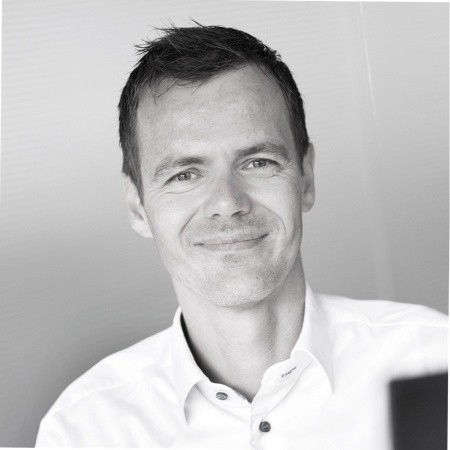
Michael Lundsgaard Sørensen
Responsable du centre de données et responsable des opérations informatiques
Region Nordjylland
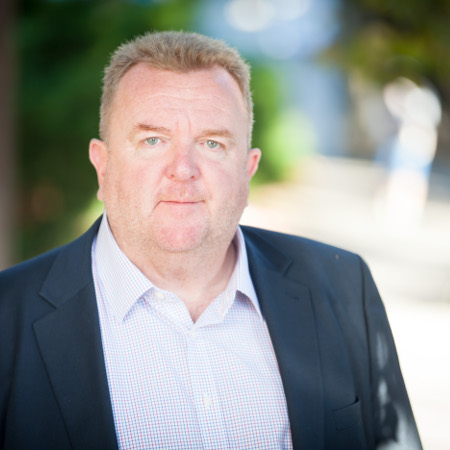
Phil Collerton
Directeur des recettes
Uptime Institute
Photos du centre de données de l’hôpital universitaire Nordjylland Aalborg de la région






Pleins feux sur l’innovation : Réduire les coûts de Tier IV en utilisant des systèmes mécaniques pour automatiser les réponses aux pannes
Eric Maddison, consultant de l’Uptime Institute, a commenté en ces termes : « La région Nordjylland’s a réussi à développer un concept de réponse et de contrôle autonomes qui est moins cher qu’un système de gestion CTS traditionnel. »
Les sous-systèmes de contrôle et d’enregistrement (CTS) de l’hôpital reposent sur une réponse électrique et mécanique pour :
- Détection des alarmes critiques et non critiques
- Alerter le personnel central d’alarme et le personnel clé
- Enregistrer et enregistrer les alarmes dans un établissement de Tier IV
- Enregistrer et enregistrer les données opérationnelles dans un établissement de Tier IV
- Tension et ampères moteur-alternateur.
- Tension de sortie de l'ASI et ampères.
- État de refroidissement libre.
- Erreur de refroidissement libre.
- Températures extérieures et ambiantes (allée chaude et allée froide)
- Températures de l’eau de refroidissement libre et du refroidisseur (entrée et sortie)
- Températures de l’eau de refroidissement en rangée (entrée et sortie)
- Températures dans la salle des générateurs A, la salle des onduleurs A et la salle des refroidisseurs A
- Pressions d’eau et de saumure dans les refroidisseurs, les refroidisseurs en rangée et les circuits de refroidissement secs et libres
« Par exemple, » a déclaré Sørensen, « Les charges dans le datacenter sont surveillées par une alarme de courant. Si la somme des courants sur l’une des phases de l’alimentation A et de l’alimentation B dépasse le maximum de l’une ou l’autre des alimentations, une alarme sonore retentit et une alarme critique est générée dans le système d’alarme A et B. L’alarme se poursuivra jusqu’à ce que la charge soit dans le maximum autorisé. »
« La région Nordjylland a fait preuve de prévoyance en concevant et en construisant le premier datacenter certifié Uptime Institute Tier IV de la région. L'accent mis sur l'obtention de la certification Tier IV pour l'installation de conception et l'installation construite signifie que le centre de données est prêt et capable de soutenir le service de santé pour les générations futures », a déclaré Phil Collerton, directeur des recettes, Uptime Institute.
Tout aussi importante et impressionnante, la région Nordjylland a terminé sa mise à niveau sans affecter la charge en direct. Le personnel infirmier, les médecins et les patients ne savaient jamais que tous les câbles, tuyaux, pompes, systèmes de refroidissement et électriques desservant les centres de données avaient été remplacés. En fait, la région Nordjylland a remplacé tout ce qui se trouvait dans son datacenter, à l'exception des serveurs et des racks.
En savoir plus sur la région Nordjylland
Le nouveau centre de données a une capacité informatique de 225 kilowatts. L’accès à la salle informatique de 211 m2 est strictement limité car il est situé dans un sous-sol de 1225 mètres carrés (m2) d’un bâtiment gouvernemental de quatre étages vieux de 35 ans. Le sous-sol lui-même se trouve à 8 mètres sous le sol. Le bâtiment comprend des murs en béton de 43 centimètres d’épaisseur, des portes automatiques renforcées en acier construites pour résister aux menaces potentielles auxquelles le pays était confronté à cette époque. L'emplacement au nord du Danemark signifie également que le datacenter peut faire une utilisation intensive du refroidissement naturel, ce qui réduit la consommation d'énergie de l'installation.
Centres de données régionaux Nordjylland avec certification
